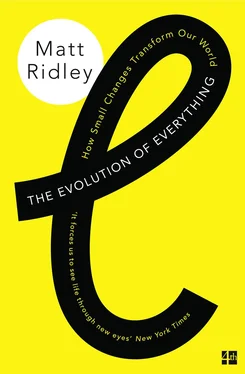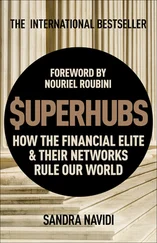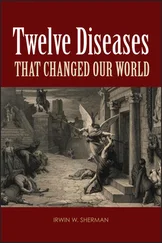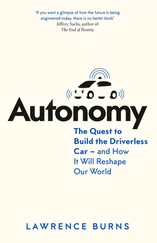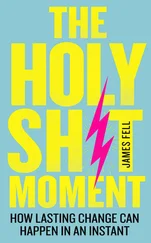One of the people who read that paragraph and began thinking about it was Leslie Orgel, a chemist at the Salk Institute in California. He mentioned it to Francis Crick, who mentioned it in an article about the new and surprising discovery of ‘split genes’ – the fact that most animal and plant genes contain long sequences of DNA called ‘introns’ that are discarded after transcription. Crick and Orgel then wrote a paper expanding on Dawkins’s selfish DNA explanation for all the extra DNA. So, at the same time, did the Canadian molecular biologists Ford Doolittle and Carmen Sapienza. ‘Sequences whose only “function” is self-preservation will inevitably arise and be maintained,’ wrote the latter. The two papers were published simultaneously in 1980.
It turns out that Dawkins was right. What would his theory predict? That the spare DNA would have features that made it good at getting itself duplicated and re-inserted into chromosomes. Bingo. The commonest gene in the human genome is the recipe for reverse transcriptase, an enzyme that the human body has little or no need for, and whose main function is usually to help the spread of retroviruses. Yet there are more copies and half-copies of this gene than of all other human genes combined. Why? Because reverse transcriptase is a key part of any DNA sequence that can copy itself and distribute the copies around the genome. It’s a sign of a digital parasite. Most of the copies are inert these days, and some are even put to good use, helping to regulate real genes or bind proteins. But they are there because they are good at being there.
The skyhook here is a sort of cousin of Locke’s ‘mind-first’ thinking: the assumption that the human good is the only good pursued within our bodies. The alternative view, penetratingly articulated by Dawkins, takes the perspective of the gene itself: how DNA would behave if it could. Close to half of the human genome consists of so-called transposable elements designed to use reverse transcriptase. Some of the commonest are known by names like LINEs (17 per cent of the genome), SINEs (11 per cent) and LTR retrotransposons (8 per cent). Actual genes, by contrast, fill just 2 per cent of the genome. These transposons are sequences that are good at getting themselves copied, and there is no longer a smidgen of doubt that they are (mostly inert) digital parasites. They are not there for the needs of the body at all.
Junk is not the same as garbage
There is a close homology with computer viruses, which did not yet exist when Dawkins suggested the genetic version of the concept of digital parasitism. Some of the transposons, the SINEs, appear to be parasites of parasites, because they use the apparatus of longer, more complete sequences to get themselves disseminated. For all the heroic attempts to see their function in terms of providing variability that might one day lead to a brave new mutation, the truth is that their more immediate and frequent effect is occasionally to disrupt the reading of genes.
Of course, these selfish DNA sequences can thrive only because a small percentage of the genome does something much more constructive – builds a body that grows, learns and adapts sufficiently to its physical and social environment that it can eventually thrive, attract a mate and have babies. At which point the selfish DNA says, ‘Thank you very much, we’ll be making up half the sequence in the children too.’
It is currently impossible to explain the huge proportion of the human genome devoted to these transposons except by reference to the selfish DNA theory. There’s just no other theory that comes close to fitting the facts. Yet it is routinely rejected, vilified and ‘buried’ by commentators on the fringe of genetics. The phrase that really gets their goat is ‘junk DNA’. It’s almost impossible to read an article on the topic without coming across surprisingly passionate denunciations of the ‘discredited’ notion that some of the DNA in a genome is useless. ‘We have long felt that the current disrespectful (in a vernacular sense) terminology of junk DNA and pseudogenes,’ wrote Jürgen Brosius and Stephen Jay Gould in an early salvo in 1992, ‘has been masking the central evolutionary concept that features of no current utility may hold crucial evolutionary importance as recruitable sources of future change.’ Whenever I write about this topic, I am deluged with moralistic denunciations of the ‘arrogance’ of scientists for rejecting unknown functions of DNA sequences. To which I reply: functions for whom? The body or the sequences?
This moral tone to the disapproval of ‘so-called’ junk DNA is common. People seem to be genuinely offended by the phrase. They sound awfully like the defenders of faith confronted with evolution – it’s the bottom–up nature of the story that they dislike. Yet as I shall show, selfish DNA and junk DNA are both about as accurate as metaphors ever can be. And junk is not the same as garbage.
What’s the fuss about? In the 1960s, as I mentioned earlier, molecular biologists began to notice that there seemed to be far more DNA in a cell than was necessary to make all the proteins in the cell. Even with what turned out to be a vastly over-inflated estimate of the number of genes in the human genome – then thought to be more than 100,000, now known to be about 20,000 – genes and their control sequences could account for only a small percentage of the total weight of DNA present in a cell’s chromosomes, at least in mammals. It’s less than 3 per cent in people. Worse, there was emerging evidence that we human beings did not seem to have the heaviest genomes or the most DNA. Humble protozoa, onions and salamanders have far bigger genomes. Grasshoppers have three times as much; lungfish forty times as much. Known by the obscure name of the ‘c-value paradox’, this enigma exercised the minds of some of the most eminent scientists of the day. One of them, Susumu Ohno, coined the term ‘junk DNA’, arguing that much of the DNA might not be under selection – that is to say, might not be being continuously honed by evolution to fit a function of the body.
He was not saying it was garbage. As Sydney Brenner later made plain, people everywhere make the distinction between two kinds of rubbish: ‘garbage’ which has no use and must be disposed of lest it rot and stink, and ‘junk’, which has no immediate use but does no harm and is kept in the attic in case it might one day be put back to use. You put garbage in the rubbish bin; you keep junk in the attic or garage.
Yet the resistance to the idea of junk DNA mounted. As the number of human genes steadily shrank in the 1990s and 2000s, so the desperation to prove that the rest of the genome must have a use (for the organism) grew. The new simplicity of the human genome bothered those who liked to think of the human being as the most complex creature on the planet. Junk DNA was a concept that had to be challenged. The discovery of RNA-coding genes, and of multiple control sequences for adjusting the activity of genes, seemed to offer some straws of hope to grasp. When it became clear that on top of the 5 per cent of the genome that seemed to be specifically protected from change between human beings and related species, another 4 per cent showed some evidence of being under selection, the prestigious journal Science was moved to proclaim ‘no more junk DNA’. What about the other 91 per cent?
In 2012 the anti-junk campaign culminated in a raft of hefty papers from a huge consortium of scientists called ENCODE. These were greeted, as intended, with hype in the media announcing the Death of Junk DNA. By defining non-junk as any DNA that had something biochemical happen to it during normal life, they were able to assert that about 80 per cent of the genome was functional. (And this was in cancer cells, with abnormal patterns of DNA hyperactivity.) That still left 20 per cent with nothing going on. But there are huge problems with this wide definition of ‘function’, because many of the things that happened to the DNA did not imply that the DNA had an actual job to do for the body, merely that it was subject to housekeeping chemical processes. Realising they had gone too far, some of the ENCODE team began to use smaller numbers when interviewed afterwards. One claimed only 20 per cent was functional, before insisting none the less that the term ‘junk DNA’ should be ‘totally expunged from the lexicon’ – which, as Dan Graur of the University of Houston and his colleagues remarked in a splenetic riposte in early 2013, thus invented a new arithmetic according to which 20 per cent is greater than 80 per cent.
Читать дальше
